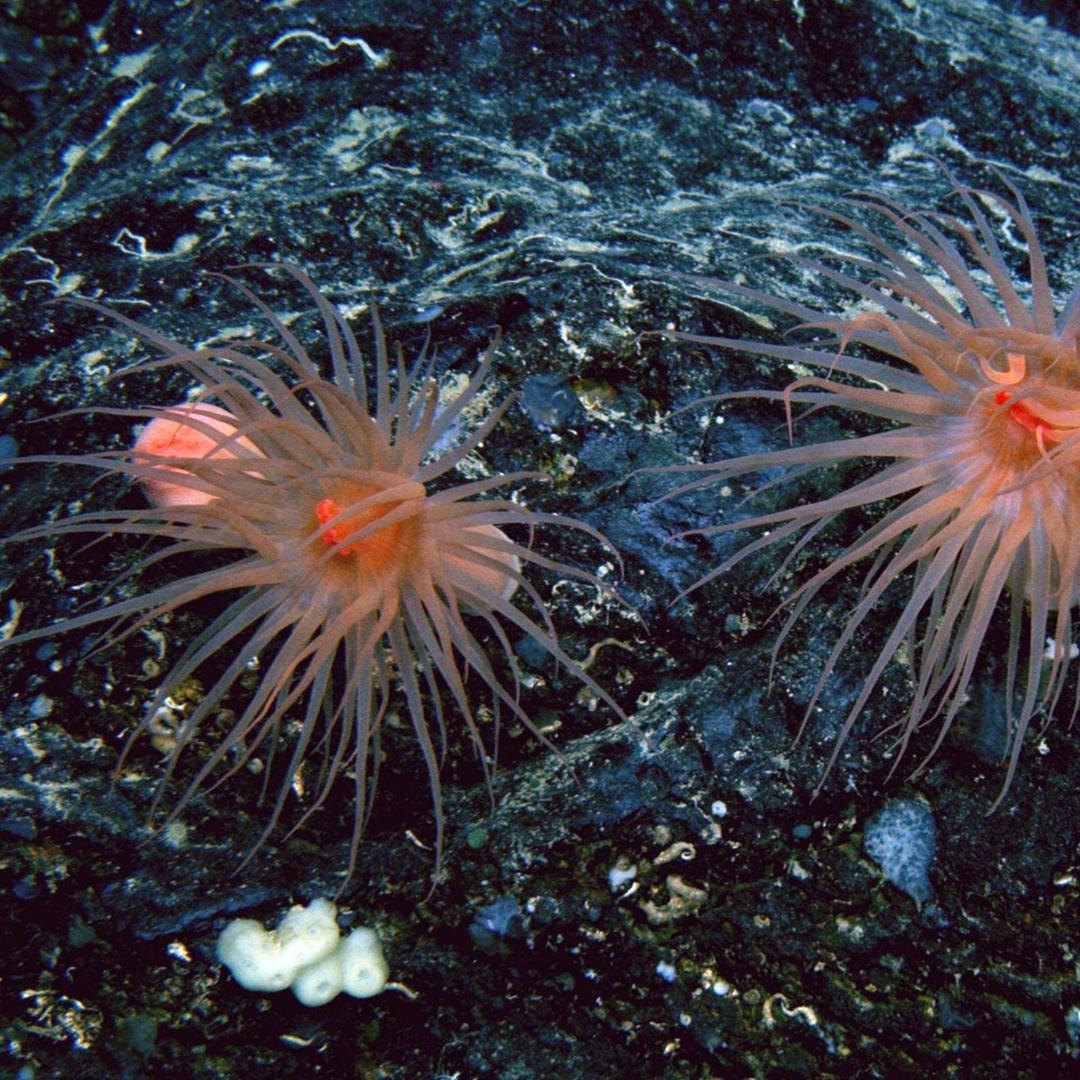Amoroso, R. O., Pitcher, C. R., Rijnsdorp, A. D., McConnaughey, R. A., Parma, A. M., Suuronen, P., ... & Jennings, S. (2018). Bottom trawl fishing footprints on the world’s continental shelves. Proceedings of the National Academy of Sciences, 115(43), E10275-E10282. Link to source: https://doi.org/10.1073/pnas.1802379115
Atwood, T. B., Witt, A., Mayorga, J., Hammill, E., & Sala, E. (2020). Global patterns in marine sediment carbon stocks. Frontiers in Marine Science, 7, 165. Link to source: https://doi.org/10.3389/fmars.2020.00165
Atwood, T.B., Sala, E., Mayorga, J. et al. Reply to: Quantifying the carbon benefits of ending bottom trawling. Nature, 617, E3–E5 (2023). Link to source: https://doi.org/10.1038/s41586-023-06015-6
Atwood, T. B., Romanou, A., DeVries, T., Lerner, P. E., Mayorga, J. S., Bradley, D., ... & Sala, E. (2024). Atmospheric CO2 emissions and ocean acidification from bottom-trawling. Frontiers in Marine Science, 10, 1125137. Link to source: https://doi.org/10.3389/fmars.2023.1125137
Balmford, A., Gravestock, P., Hockley, N., McClean, C.J. and Roberts, C.M. (2004). The worldwide costs of marine protected areas. Proceedings of the National Academy of Sciences, 101(26), pp.9694-9697. Link to source: https://doi.org/10.1073/pnas.0403239101
Burdige, D. J. (2005). Burial of terrestrial organic matter in marine sediments: a re-assessment. Global Biogeochem. Cycles, 19:GB4011. Link to source: https://doi.org/10.1029/2004GB002368
Burdige, D. J. (2007). Preservation of organic matter in marine sediments: controls, mechanisms, and an imbalance in sediment organic carbon budgets? Chem. Rev., 107, 467–485. Link to source: https://doi.org/10.1021/cr050347q
Carr, M. E., Friedrichs, M. A. M., Schmeltz, M., Aita, M. N., Antoine, D., Arrigo, K., et al. (2006). A comparison of global estimates of marine primary production from ocean color. Deep-sea Res. II, Top. Stud. Oceanogr., 53, 741–770. Link to source: https://doi.org/10.1016/j.dsr2.2006.01.028
Clare, M. A., Lichtschlag, A., Paradis, S., & Barlow, N. L. M. (2023). Assessing the impact of the global subsea telecommunications network on sedimentary organic carbon stocks. Nature Communications, 14(1), 2080. Link to source: https://doi.org/10.1038/s41467-023-37854-6
Dureuil, M., Boerder, K., Burnett, K. A., Froese, R., & Worm, B. (2018). Elevated trawling inside protected areas undermines conservation outcomes in a global fishing hot spot. Science, 362(6421), 1403-1407. Link to source: https://doi.org/10.1126/science.aau0561
Epstein, G., Middelburg, J. J., Hawkins, J. P., Norris, C. R., & Roberts, C. M. (2022). The impact of mobile demersal fishing on carbon storage in seabed sediments. Global Change Biology, 28(9), 2875-2894. Link to source: https://doi.org/10.1111/gcb.16105
Estes, E. R., Pockalny, R., D’Hondt, S., Inagaki, F., Morono, Y., Murray, R. W., ... & Hansel, C. M. (2019). Persistent organic matter in oxic subseafloor sediment. Nature Geoscience, 12(2), 126-131. Link to source: https://doi.org/10.1038/s41561-018-0291-5
Kandasamy, S., & Nagender Nath, B. (2016). Perspectives on the terrestrial organic matter transport and burial along the land-deep sea continuum: caveats in our understanding of biogeochemical processes and future needs. Frontiers in Marine Science, 3, 259. Link to source: https://doi.org/10.3389/fmars.2016.00259
Muller-Karger, F. E., Varela, R., Thunell, R., Luerssen, R., Hu, C., and Walsh, J. J. (2005). The importance of continental margins in the global carbon cycle. Geophys. Res. Lett., 32:L01602. Link to source: https://doi.org/10.1029/2004gl021346
Putuhena, H., White, D., Gourvenec, S., & Sturt, F. (2023). Finding space for offshore wind to support net zero: A methodology to assess spatial constraints and future scenarios, illustrated by a UK case study. Renewable and Sustainable Energy Reviews, 182, 113358. Link to source: https://doi.org/10.1016/j.rser.2023.113358
Sala, E., Mayorga, J., Bradley, D., Cabral, R. B., Atwood, T. B., Auber, A., ... & Lubchenco, J. (2021). Protecting the global ocean for biodiversity, food and climate. Nature, 592(7854), 397-402. Link to source: https://doi.org/10.1038/s41586-021-03371-z
Sala, E., & Giakoumi, S. (2018). No-take marine reserves are the most effective protected areas in the ocean. ICES Journal of Marine Science, 75(3), 1166-1168. Link to source: https://doi.org/10.1093/icesjms/fsx059
Siegel, D. A., DeVries, T., Doney, S. C., & Bell, T. (2021). Assessing the sequestration time scales of some ocean-based carbon dioxide reduction strategies. Environmental Research Letters, 16(10), 104003. Link to source: https://doi.org/10.1088/1748-9326/ac0be0
(TMC, 2022) The Metals Company. (2022). How much seafloor will the nodule collection industry impact? Retrieved April 17, 2025, from Link to source: https://metals.co/how-much-seafloor-will-the-nodule-collection-industry-impact/
UNEP-WCMC and IUCN (2024). Protected Planet Report 2024. UNEP-WCMC and IUCN: Cambridge, United Kingdom; Gland, Switzerland. Link to source: https://digitalreport.protectedplanet.net/
Zhang, W., Porz, L., Yilmaz, R., Wallmann, K., Spiegel, T., Neumann, A., ... & Schrum, C. (2024). Long-term carbon storage in shelf sea sediments reduced by intensive bottom trawling. Nature Geoscience, 1-9. Link to source: https://doi.org/10.1038/s41561-024-01581-4
van de Velde, S. J., Hylén, A., & Meysman, F. J. (2025). Ocean alkalinity destruction by anthropogenic seafloor disturbances generates a hidden CO2 emission. Science Advances, 11(13), Link to source: https://doi.org/10.1126/sciadv.adp9112
Watson, S. C., Somerfield, P. J., Lemasson, A. J., Knights, A. M., Edwards-Jones, A., Nunes, J., ... & Beaumont, N. J. (2024). The global impact of offshore wind farms on ecosystem services. Ocean & Coastal Management, 249, 107023. Link to source: https://doi.org/10.1016/j.ocecoaman.2024.107023

